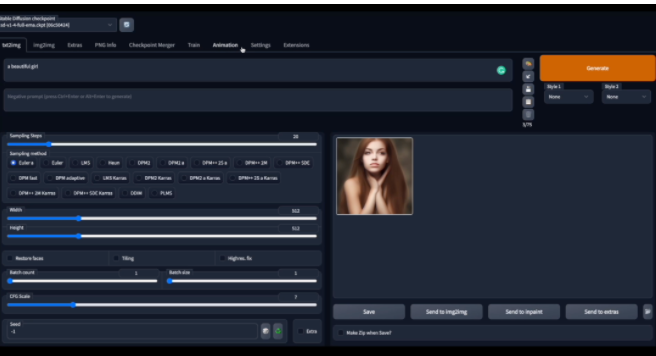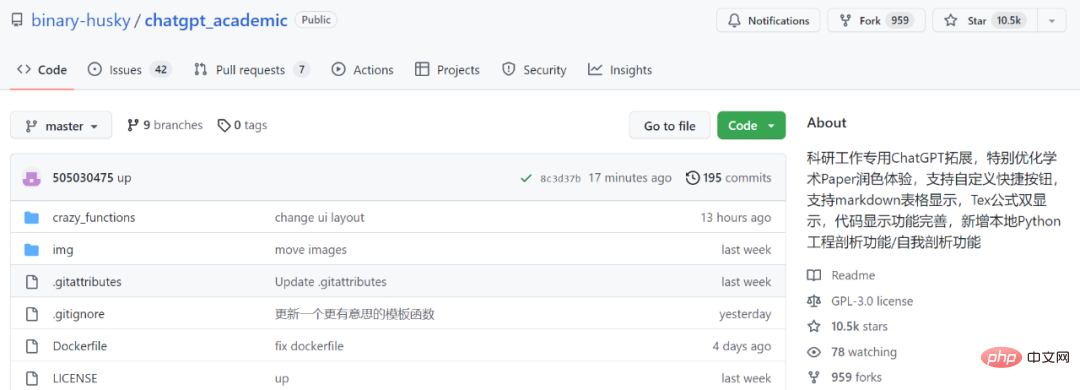
How to use ChatGPT and Java to develop a smart map navigation system
Introduction:
As people's demand for smart technology continues to grow, smart map navigation systems It has become one of the indispensable tools in people's daily life. In order to provide more accurate and personalized navigation services, it can be a good choice to develop an intelligent map navigation system by combining ChatGPT and Java. This article will introduce in detail the introduction of ChatGPT, the establishment of Java development environment, and how to use ChatGPT and Java to develop an intelligent map navigation system, and give specific code examples.
1. Introduction to ChatGPT
ChatGPT is a dialogue system based on a large-scale pre-trained language model developed by OpenAI. It can understand user-entered conversations and generate reasonable, coherent responses. Different from traditional rule engines, ChatGPT can generate replies based on existing language knowledge and context, with higher semantic understanding and logical reasoning capabilities.
2. Java development environment construction
Before using Java to develop a map navigation system, we need to set up a Java development environment. The specific steps are as follows:
- Download and install the Java Development Kit (JDK): Visit Oracle's official website to download the JDK and follow the installation wizard to install it.
- Configure environment variables: Add the JDK installation path to the system environment variables so that javac and java commands can be executed on the command line.
- Verify the installation: Execute the java -version command in the command line. If there is normal output, the installation is successful.
3. Develop intelligent map navigation system
- Import related libraries:
import java.util.Scanner; -
Create map Navigation class:
public class MapNavigator {
public static void main(String[] args) {// 在此处添加地图导航逻辑
}
} - Use ChatGPT to implement the conversation function :
a. Introduce OpenAI’s Java SDK: Introduce OpenAI’s Java SDK into the project so that you can use the API provided by ChatGPT.
b. Set the OpenAI API key: By calling the OpenAI API, you need to set the API key.
c. Write the conversation method:
public static String chat(String message) {
// Call the API of ChatGPT and pass the conversation entered by the user as a parameter
} - Add navigation logic:
a. Get the starting point and end point input by the user:
Scanner scanner = new Scanner(System.in);
System.out.println("Please enter the starting point:");
String startPoint = scanner.nextLine();
System.out.println("Please enter the end point:");
String endPoint = scanner.nextLine();
b . Call ChatGPT for conversation:
String message = startPoint "to" endPoint;
String response = chat(message);
c. Parse ChatGPT's reply:
// Parse ChatGPT's Reply to get navigation results such as route information
- Improve navigation functions:
According to actual needs, more functions can be added, such as real-time traffic information, route recommendations, voice navigation, etc.
Conclusion:
This article introduces how to use ChatGPT and Java to develop an intelligent map navigation system. By combining ChatGPT's semantic understanding and logical reasoning capabilities, the map navigation system can be made more intelligent and provide more accurate and personalized navigation services. At the same time, we provide specific code examples for developers to refer to and practice. I hope this article can help you develop an intelligent map navigation system.
The above is the detailed content of How to use ChatGPT and Java to develop an intelligent map navigation system. For more information, please follow other related articles on the PHP Chinese website!
 令人惊艳的4个ChatGPT项目,开源了!Mar 30, 2023 pm 02:11 PM
令人惊艳的4个ChatGPT项目,开源了!Mar 30, 2023 pm 02:11 PM自从 ChatGPT、Stable Diffusion 发布以来,各种相关开源项目百花齐放,着实让人应接不暇。今天,着重挑选几个优质的开源项目分享给大家,对我们的日常工作、学习生活,都会有很大的帮助。
 Word文档拆分后的子文档字体格式变了怎么办Feb 07, 2023 am 11:40 AM
Word文档拆分后的子文档字体格式变了怎么办Feb 07, 2023 am 11:40 AMWord文档拆分后的子文档字体格式变了的解决办法:1、在大纲模式拆分文档前,先选中正文内容创建一个新的样式,给样式取一个与众不同的名字;2、选中第二段正文内容,通过选择相似文本的功能将剩余正文内容全部设置为新建样式格式;3、进入大纲模式进行文档拆分,操作完成后打开子文档,正文字体格式就是拆分前新建的样式内容。
 学术专用版ChatGPT火了,一键完成论文润色、代码解释、报告生成Apr 04, 2023 pm 01:05 PM
学术专用版ChatGPT火了,一键完成论文润色、代码解释、报告生成Apr 04, 2023 pm 01:05 PM用 ChatGPT 辅助写论文这件事,越来越靠谱了。 ChatGPT 发布以来,各个领域的从业者都在探索 ChatGPT 的应用前景,挖掘它的潜力。其中,学术文本的理解与编辑是一种极具挑战性的应用场景,因为学术文本需要较高的专业性、严谨性等,有时还需要处理公式、代码、图谱等特殊的内容格式。现在,一个名为「ChatGPT 学术优化(chatgpt_academic)」的新项目在 GitHub 上爆火,上线几天就在 GitHub 上狂揽上万 Star。项目地址:https://github.com/
 vscode配置中文插件,带你无需注册体验ChatGPT!Dec 16, 2022 pm 07:51 PM
vscode配置中文插件,带你无需注册体验ChatGPT!Dec 16, 2022 pm 07:51 PM面对一夜爆火的 ChatGPT ,我最终也没抵得住诱惑,决定体验一下,不过这玩意要注册需要外国手机号以及科学上网,将许多人拦在门外,本篇博客将体验当下爆火的 ChatGPT 以及无需注册和科学上网,拿来即用的 ChatGPT 使用攻略,快来试试吧!
 30行Python代码就可以调用ChatGPT API总结论文的主要内容Apr 04, 2023 pm 12:05 PM
30行Python代码就可以调用ChatGPT API总结论文的主要内容Apr 04, 2023 pm 12:05 PM阅读论文可以说是我们的日常工作之一,论文的数量太多,我们如何快速阅读归纳呢?自从ChatGPT出现以后,有很多阅读论文的服务可以使用。其实使用ChatGPT API非常简单,我们只用30行python代码就可以在本地搭建一个自己的应用。 阅读论文可以说是我们的日常工作之一,论文的数量太多,我们如何快速阅读归纳呢?自从ChatGPT出现以后,有很多阅读论文的服务可以使用。其实使用ChatGPT API非常简单,我们只用30行python代码就可以在本地搭建一个自己的应用。使用 Python 和 C
 用ChatGPT秒建大模型!OpenAI全新插件杀疯了,接入代码解释器一键getApr 04, 2023 am 11:30 AM
用ChatGPT秒建大模型!OpenAI全新插件杀疯了,接入代码解释器一键getApr 04, 2023 am 11:30 AMChatGPT可以联网后,OpenAI还火速介绍了一款代码生成器,在这个插件的加持下,ChatGPT甚至可以自己生成机器学习模型了。 上周五,OpenAI刚刚宣布了惊爆的消息,ChatGPT可以联网,接入第三方插件了!而除了第三方插件,OpenAI也介绍了一款自家的插件「代码解释器」,并给出了几个特别的用例:解决定量和定性的数学问题;进行数据分析和可视化;快速转换文件格式。此外,Greg Brockman演示了ChatGPT还可以对上传视频文件进行处理。而一位叫Andrew Mayne的畅销作
 ChatGPT教我学习PHP中AOP的实现(附代码)Mar 30, 2023 am 10:45 AM
ChatGPT教我学习PHP中AOP的实现(附代码)Mar 30, 2023 am 10:45 AM本篇文章给大家带来了关于php的相关知识,其中主要介绍了我是怎么用ChatGPT学习PHP中AOP的实现,感兴趣的朋友下面一起来看一下吧,希望对大家有帮助。


Hot AI Tools

Undresser.AI Undress
AI-powered app for creating realistic nude photos

AI Clothes Remover
Online AI tool for removing clothes from photos.

Undress AI Tool
Undress images for free

Clothoff.io
AI clothes remover

AI Hentai Generator
Generate AI Hentai for free.

Hot Article

Hot Tools

SublimeText3 Mac version
God-level code editing software (SublimeText3)

SAP NetWeaver Server Adapter for Eclipse
Integrate Eclipse with SAP NetWeaver application server.

Atom editor mac version download
The most popular open source editor

mPDF
mPDF is a PHP library that can generate PDF files from UTF-8 encoded HTML. The original author, Ian Back, wrote mPDF to output PDF files "on the fly" from his website and handle different languages. It is slower than original scripts like HTML2FPDF and produces larger files when using Unicode fonts, but supports CSS styles etc. and has a lot of enhancements. Supports almost all languages, including RTL (Arabic and Hebrew) and CJK (Chinese, Japanese and Korean). Supports nested block-level elements (such as P, DIV),

SecLists
SecLists is the ultimate security tester's companion. It is a collection of various types of lists that are frequently used during security assessments, all in one place. SecLists helps make security testing more efficient and productive by conveniently providing all the lists a security tester might need. List types include usernames, passwords, URLs, fuzzing payloads, sensitive data patterns, web shells, and more. The tester can simply pull this repository onto a new test machine and he will have access to every type of list he needs.







